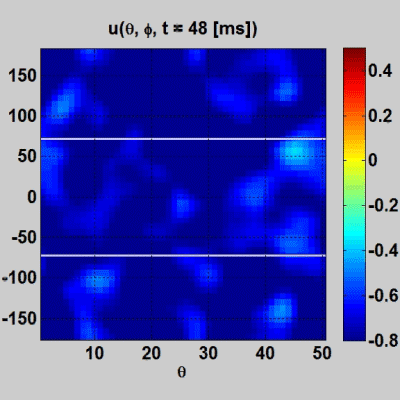Neural field model for multi-stability in action perception

Research Area:
Neural and Computational Principles of Action and Social ProcessingResearchers:
Martin A. GieseDescription:
The visual recognition of body motion in the primate brain requires the temporal integration of information over complex patterns, potentially exploiting recurrent neural networks consisting of shape- and optic-flow-selective neurons. Our mathematically simple neurodynamical model approximates the mean-field dynamics of such networks. It is based on a two-dimensional neural field with appropriate lateral interaction kernel and an adaptation process for the individual neurons. The model accounts for a number of, so far not modeled, observations in the recognition of body motion, including perceptual multi-stability and the weakness of repetition suppression, as observed in single-cell recordings for the repeated presentation of action stimuli.
Asimplified version of the model is given by the following pair of equations. The first is the neural field equation, and the second defines a simple adaptation process. The field is two-dimesnional, where θ is the snapshot number within an action sequence, and where Φ is the view angle:
The model reproduces basic dynamic effects in the perceptual organization of action stimuli, for example multi-stability and adaptation.
Figure 1: Reproduction of perceptual switching. Curves indicate the activity of neurons ensembples encoding the two perceptual alternatives as a function of time.
Figure 2: Reproduction of adaptation effects for action-selective neurons. Red curve: adaptation effect for single repretition of an action stimulus (result typical for area F5, resulting in very weak adaptation effect. Green curve: much stronger adaptation effect for a new stimulus that was predicted frokm the model.
